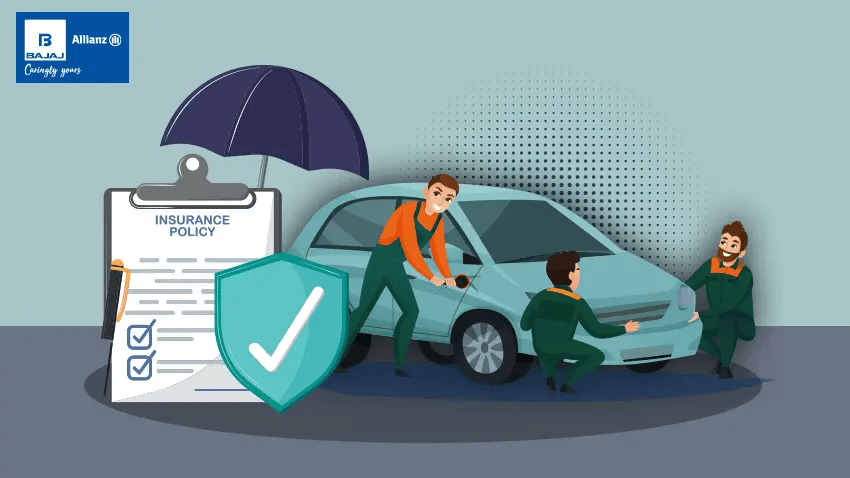How Vehicle Insurance Supports: As the number of vehicles on roads continues to grow exponentially, the associated risks of accidents, injuries, and fatalities are also rising. Expanding road networks and the trend of faster-moving traffic have led to an alarming increase in road accidents globally. These unfortunate incidents not only bring emotional trauma but also cause a significant economic impact on the country’s GDP. Acknowledging these facts, the Ministry of Road Transport and Highways (MoRTH) has repeatedly emphasized the pivotal role of vehicle insurance in reinforcing road safety.
Vehicle insurance acts as a financial safety net, shielding individuals from the heavy costs associated with accidents, property damage, and legal liabilities. But beyond this, it serves as a core component of a broader road safety framework. By promoting responsible driving behavior, ensuring legal compliance, and supporting accident-related interventions, insurance acts as both a deterrent and a remedy. Furthermore, digital-first insurance companies like ACKO, Digit, and others are leveraging technology to enhance accessibility, affordability, and awareness, thereby playing a proactive role in fostering road safety.
In India, car insurance is not just a regulatory obligation—it’s a moral and social responsibility. With mandatory third-party coverage under the Motor Vehicles Act, 1988, it ensures accountability on the roads. Insured drivers are more likely to be cautious, knowing the consequences of claims and premium hikes. The government also uses insurance data to implement targeted road safety programs, including better accident response systems, legal reforms, and vehicle fitness initiatives.
Significance of Car Insurance in India
Vehicle insurance in India is more than a tool for financial protection—it’s a strategic pillar of road safety enforcement. Here’s how:
1. Mandatory Motor Insurance Enforces Compliance
Under the Motor Vehicles Act, every vehicle owner is required to possess third-party insurance. This ensures that victims of road mishaps are compensated, promoting a sense of justice and social responsibility.
2. Encourages Responsible Driving
When policyholders know they could lose their No Claim Bonus (NCB) or face increased premiums for risky driving, it encourages more careful and law-abiding behavior on the road.
3. Supports Government Road Safety Initiatives
Insurance data helps authorities track accident-prone areas, determine causes of road incidents, and tailor policies or road infrastructure projects accordingly.
Who Can Apply for Vehicle Insurance?
Anyone who owns a vehicle—whether it’s a two-wheeler, car, commercial vehicle, or electric vehicle—must apply for insurance. Both private and commercial vehicle owners are eligible to purchase policies. Whether the vehicle is new or used, insurance is mandatory before it is registered or driven on public roads.
Eligibility criteria include:
- Owner must be a legal citizen or registered company in India.
- The vehicle must have valid registration documents (RC).
- For renewal, the previous insurance copy and no pending legal cases are required.
Vehicle Insurance Fees & Premiums
The cost of car or bike insurance depends on several factors:
| Type of Insurance | Approximate Annual Premium |
|---|---|
| Third-Party Only (2W) | ₹500 – ₹1,200 |
| Third-Party Only (4W) | ₹2,000 – ₹7,000 |
| Comprehensive (2W) | ₹1,000 – ₹3,000 |
| Comprehensive (4W) | ₹4,000 – ₹25,000+ |
Premium depends on:
- Type of vehicle and engine capacity
- Insured Declared Value (IDV)
- Location and usage (personal or commercial)
- Age of the vehicle
- Add-ons like zero depreciation, engine protection, roadside assistance
How to Use Vehicle Insurance Benefits
Once insured, policyholders can:
- Claim for repairs in case of accidental damage.
- Get third-party liability coverage, including legal costs.
- Avail of cashless repairs at network garages.
- Use roadside assistance services.
- Benefit from No Claim Bonus discounts during policy renewal.
Claim Process:
- Inform the insurer immediately after an accident.
- Submit FIR (if applicable) and claim form.
- Survey by insurer’s representative.
- Repair or compensation processing begins.

How to Apply for Vehicle Insurance?
Online Method:
- Visit the insurer’s website (e.g., ACKO, ICICI Lombard, HDFC ERGO).
- Enter vehicle details (registration number, model, variant).
- Choose the type of policy – Third-party or Comprehensive.
- Select add-ons (optional).
- Review premium and pay online.
- Get e-policy instantly on email.
Offline Method:
- Visit nearest insurer branch or licensed agent.
- Provide necessary documents.
- Fill out the insurance form.
- Pay premium and receive policy certificate. Ministry of Road Transport & Highways (MoRTH)
Important Dates
There are no fixed dates for insurance application as it is mandatory at the time of purchase and must be renewed annually
Disclaimer
The information presented here is based on publicly available sources and general policy guidelines as of 2025. Actual premiums, processes, and benefits may vary based on the insurance provider and location. Always verify details on the official website or by contacting the insurer directly before purchasing a policy. The author assumes no responsibility for policy discrepancies or misinterpretations.
How Vehicle Insurance Supports Conclusion
The increasing number of vehicles on roads calls for robust mechanisms to protect citizens and enhance road safety. Vehicle insurance, once seen merely as a regulatory formality, is now emerging as a strategic road safety tool, contributing to improved accident response, responsible driving, and financial stability for both victims and drivers.
As digital transformation reshapes the insurance landscape, new-age players are making insurance more accessible, affordable, and aligned with government safety initiatives. Real-time claim assistance, crash detection, and zero-touch policy issuance are just the beginning of a larger shift toward proactive road safety.
By mandating third-party insurance and encouraging comprehensive coverage, the government ensures that everyone on the road is protected—not just financially, but ethically and socially. As responsible citizens, it’s essential to view vehicle insurance not as a burden but as a critical part of national safety infrastructure.
In the end, safer roads begin with safer behavior—and vehicle insurance plays a foundational role in shaping that behavior. It is not just a piece of paper, but a promise of safety, security, and shared responsibility.
How Vehicle Insurance Supports FAQs
1. Why is vehicle insurance mandatory in India?
Vehicle insurance is mandatory in India under the Motor Vehicles Act, 1988 to ensure that accident victims are financially protected and that vehicle owners are held accountable. It supports legal compliance, improves public safety, and provides compensation for third-party damages or injuries.
2. What happens if I drive without insurance in India?
Driving without valid motor insurance is a punishable offense. You can face fines of up to ₹2,000 for the first offense and up to ₹4,000 or imprisonment for repeat offenses. Additionally, in case of an accident, all liabilities must be borne by the driver, which can be financially devastating.
3. Which type of car insurance is best for Indian roads?
A comprehensive car insurance policy is ideal as it provides coverage for both third-party liabilities and own damages. It also allows for optional add-ons like roadside assistance, zero depreciation cover, and engine protection—important in Indian driving conditions.
4. Can I buy car insurance online and is it safe?
Yes, buying car insurance online is completely safe when done through IRDAI-approved insurers. Online purchase offers the benefit of comparing plans, instant issuance, and policy customization. Companies like ACKO, Digit, HDFC ERGO, and Bajaj Allianz provide secure digital insurance solutions.
5. Does insurance really improve road safety?
Absolutely. Insurance encourages drivers to be more cautious to avoid claims and premium hikes. It also helps the government monitor accident trends, fund road safety campaigns, and design better regulations. In short, insurance cultivates a safety-first driving culture.



